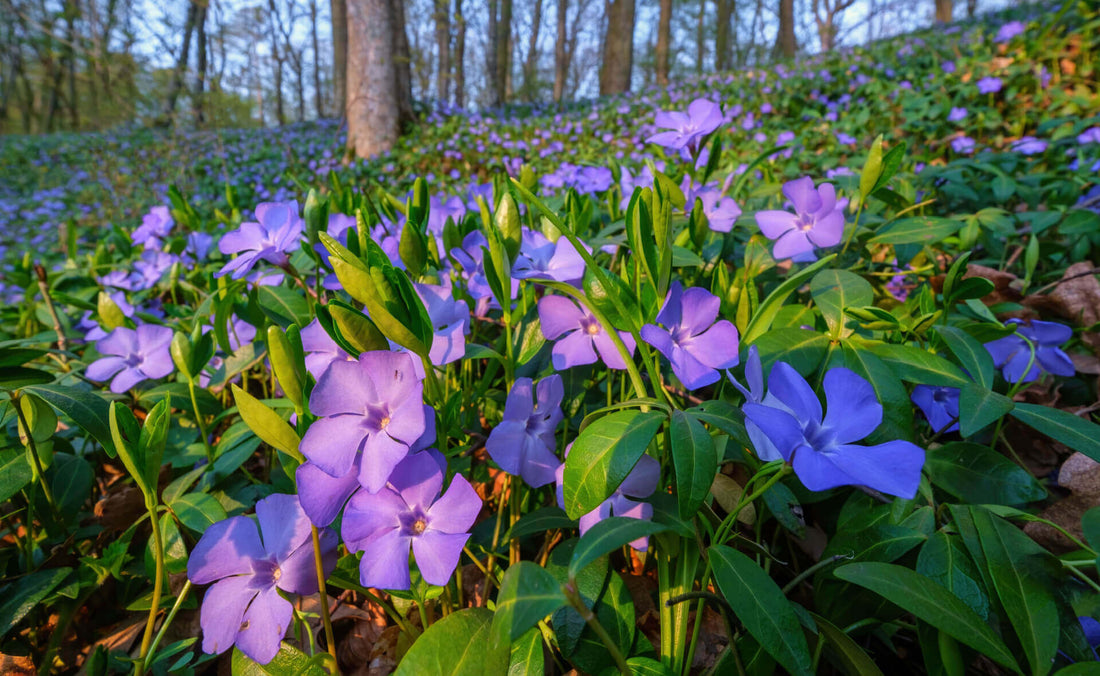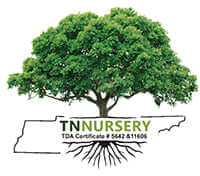
Perennials for Erosion Control
Share
Harnessing the Power of Nature
Erosion control is a critical aspect of landscaping and land management. The relentless forces of wind and water can erode soil, causing damage to the environment and structures. Perennials play a vital role in combatting erosion due to their deep roots, ground cover properties, and ability to stabilize the soil. In exploring perennials for erosion control, we will delve into the characteristics and benefits of six remarkable perennial plants, including periwinkle, creeping phlox, Virginia creeper, bugleweed, black-eyed Susan's, and ferns.
Periwinkle (Vinca minor)
Periwinkle, or Vinca minor or myrtle, is a versatile and robust ground cover plant used extensively for erosion control. Native to Europe, this evergreen perennial boasts glossy, dark green leaves and striking violet-blue or white flowers. It thrives in partial to full shade and is adaptable to various soil types. Periwinkle is an excellent choice for erosion control due to its dense growth habit and vigorous root system. Its trailing stems create a thick mat that stabilizes soil on slopes and prevents erosion. Additionally, periwinkle's low maintenance requirements make it an attractive option for residential and commercial landscapes.
Creeping Phlox (Phlox subulata)
Creeping phlox, scientifically known as Phlox subulata, is a creeping, mat-forming perennial that bursts into a breathtaking display of color in the spring. Native to North America, this low-growing plant is adorned with fragrant, star-shaped flowers in shades of pink, purple, white, and blue. One key feature that makes creeping phlox an ideal choice for erosion control is its ability to thrive in poor, rocky soils. Its dense, evergreen foliage provides year-round coverage and helps anchor soil on slopes. During the spring bloom, the vibrant colors create a visually appealing landscape that prevents erosion and adds aesthetic value.
Virginia Creeper (Parthenocissus quinquefolia)
Virginia creeper, or Parthenocissus quinquefolia, is a deciduous climbing vine native to North America. Although it is known for its ability to climb walls and structures, it can also serve as an adequate ground cover for erosion control. Its palmate leaves turn a brilliant red in the fall, providing seasonal interest. The vigorous growth of Virginia creeper makes it an excellent choice for quickly covering large areas prone to erosion. Its adhesive tendrils and aerial rootlets allow it to cling to surfaces, creating a natural blanket that reduces soil erosion and stabilizes slopes. While it may require occasional pruning to prevent overgrowth, Virginia Creeper offers a unique and attractive erosion control solution.
Bugleweed (Ajuga reptans)
Bugleweed, scientifically called Ajuga reptans, is a low-growing perennial ground cover native to Europe. It features attractive, scalloped leaves and spikes of small, tubular flowers: blue, purple, pink, or white. Bugleweed adapts to various soil conditions and thrives in sun and shade. Bugleweed is an excellent choice for erosion control due to its spreading habit and dense foliage. Its mat-like growth covers the ground effectively, preventing soil erosion and providing an attractive, low-maintenance landscape solution. Bugleweed is also a valuable pollinator plant, attracting bees and butterflies to your garden.
Black-Eyed Susan's (Rudbeckia fulgida)
Black-eyed Susan's, or Rudbeckia fulgida, are native North American perennials that add vibrant color to gardens and landscapes. These sun-loving perennials feature golden-yellow petals and a dark central cone, giving them their distinctive appearance. Black-eyed Susan's are visually appealing and highly effective for erosion control. The robust root system of black-eyed Susan's helps stabilize soil on slopes, while their dense growth forms a natural barrier against erosion. Once established, these hardy perennials can thrive in various soil types and are drought-tolerant, making them a reliable choice for erosion-prone areas.
Ferns (Various Species)
Ferns belong to a diverse group of non-flowering, perennial plants well-suited for erosion control in shady areas. While numerous fern species exist, many share common characteristics that make them effective erosion fighters. Ferns are particularly valuable for their lush, feathery fronds that create dense ground cover. They thrive in moist, shaded environments and excel at stabilizing soil in woodland settings or areas with limited sunlight. Some popular fern varieties for erosion control include the Lady Fern (Athyrium filix-femina) and Ostrich Fern (Matteuccia struthiopteris).
Perennials offer an eco-friendly and sustainable solution for erosion control. Their deep root systems, dense growth habits, and adaptability to various conditions make them valuable landscaping and land management assets. In exploring perennials for erosion control, we have highlighted the unique attributes and benefits of periwinkle, creeping phlox, Virginia creeper, bugleweed, black-eyed Susan's, and ferns. By harnessing the power of nature through these perennial plants, we can protect our soil, enhance our landscapes, and contribute to a healthier environment.
